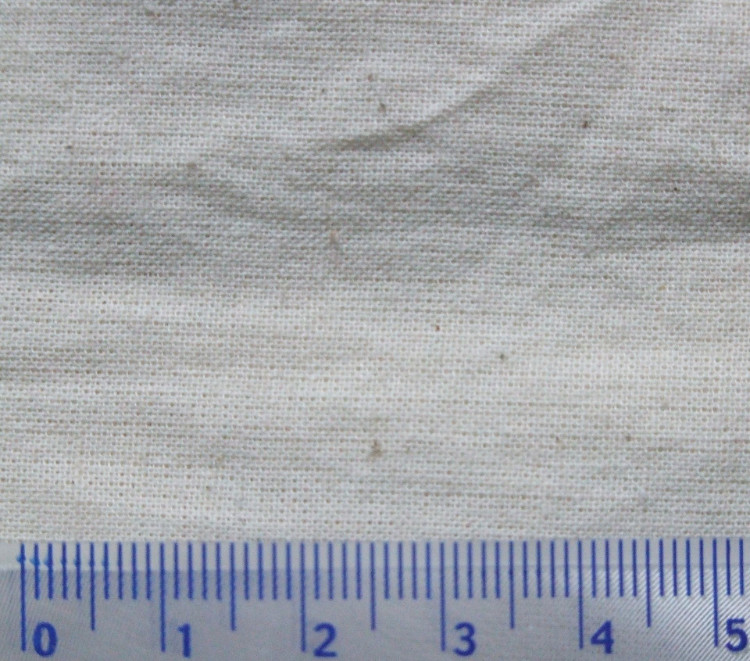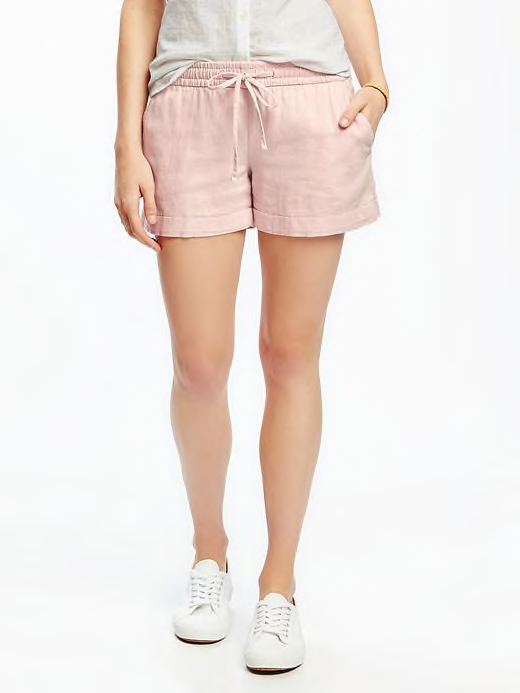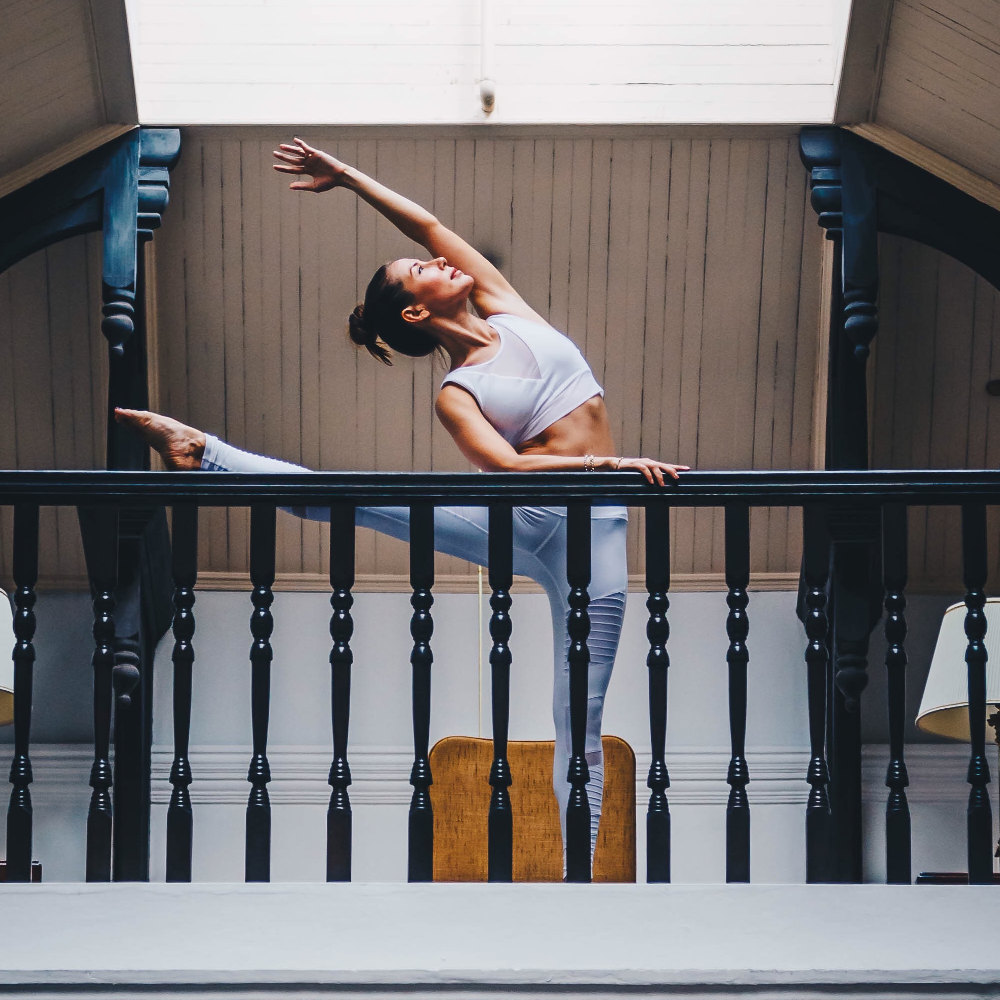
Hey Makers!
Welcome to my Sewing 101 summer course! This is the first of many sewing articles and tutorials I will be writing over the course of this summer, and I hope you’ll stick around to learn a fun new skill. For the month of June, we will be looking at many beginner subjects regarding sewing. Then, once July starts, we’ll begin to apply those skills and knowledge to some fun, summer friendly sewing projects you’ll be able to make for yourself.
Let’s get started!
**All of my Sewing 101 posts are written with absolute beginners in mind. I’ve created a handy Glossary of sewing terms and vocabulary for you to reference any time.**
Getting to Know Your Fabric
Fabric can be an intimidating subject for some who are looking to learn how to sew. Walking into a fabric store can quickly become sensory overload if you don’t know what you’re looking for. I’ve decided that this is a perfect place to start my Sewing 101 summer course because it’s a very important subject to understand before you sew your first stitch.
I’m going to go over some of the most common types of fabrics that you will most likely work with as a beginner. This is not an extensive list, but just something to get you started. First we will go over fabric types, then we will talk about the materials that fabrics can be made from. Both of these attributes are important to consider when picking out fabric for a specific project, and you should have a good idea of how they effect the finished product.
Common Fabric Types

Calico fabric sample (scale in cm). Photo by Clem Rutter, Rochester, Kent
Muslin (Calico)
Muslin is a very stiff, undyed fabric used most commonly for mockups and test runs before completing a final project. You can find muslin in many different weights to fit your project’s needs. It’s very cheap – because it’s used for test runs – and should not be overlooked as an important part of the sewing process.
If you’re unsure of your ability to complete a sewing project, or it includes a technique you’ve never done before, grab some muslin and try it out! Because it’s so cheap, doing a test run on muslin is absolutely worth all the time and money you put into it. Through doing test runs you can gain a lot of confidence in yourself before you start your main project. When you have more confidence, you can start doing crazy things like buying that gorgeous, slightly over budget fabric that would be perfect for your project but you were too scared you would mess it up and ruin the material 😉
Broadcloth
Broadcloth has a similar stiffness to muslin, but it’s made up of a tighter weave, it’s softer, and available in a wide range of colors for final projects. It’s commonly used for costume clothing and sturdy items like aprons and bags. Broadcloth can also be used for quilting, but it’s not as soft as cotton.
Personally, I found broadcloth to be a great intro fabric for learning to sew. I could pick up any color I wanted from the local Joann Fabrics and make little things like pouches and purses just to work on my sewing skills. I wouldn’t really recommend using broadcloth for clothing unless you’re making costumes and need them to look really crisp. Broadcloth has no stretch, so you’ll need to add elastic to anything you want to stretch.
Canvas
Canvas is a very durable material often used in making bags and outdoor textiles. Canvas holds up to a lot of wear due to its thick, woven structure. It’s not ideal for clothing, but great for any project that needs to have a durable finished product.
Most often, canvas is seen un-dyed and natural. The fabric is beige or tan in color. This allows for lots of customization opportunities, like stamping, painting, or dying the fabric in creative ways.
Quilters Cotton
The super colorful fabric you see lining the walls of craft stores that comes in every color, print, and pattern you could ever dream of. This fabric is great for a wide range of sewing projects, even beyond quilts. This fabric is very easy to work with and there are a variety of ways to add stretch to it for more practical projects. Quilters cotton is commonly sold by the yard, but you can also find what are called “fat quarters”. Fat quarters are created by taking a yard of fabric, cutting it in half length wise, then again in half width-wise. This leaves you with material measuring ~18″ x 22″ (46cm x 56cm), as opposed to a standard quarter yard that measures ~44″ x 9″ (112cm x 23cm).
It’s commonly called quilters “cotton” because that’s what it’s often made of, but quilters fabric can be found in many other material blends as well. Quilters cotton can be a great way to start to expand your creative thinking with sewing projects. You can combine lots of different prints and patterns in the same color scheme to make matching sets of whatever you’re making. My mom often used quilters cotton for scrub tops and aprons.
Apparel Fabrics

Linen Shorts from Old Navy
Knits
Knits are the most common type of apparel fabric. T-shirts, dresses, activewear, leggings, hoodies, scarves – pretty much any clothing you can find that stretches a lot is going to be some sort of knit fabric.
Knits are an essential fabric type for apparel sewing, however they can also be the most challenging to work with. Because they’re so stretchy, running seams can become problematic if you don’t know how to keep the fabric stable while you work.
Linens
These are non-stretchy fabrics that are used for clothing and home goods like sheets and curtains. Linens are breathable and come in a range of weights, so they are pretty versatile for sewing projects. In apparel projects, they’re perfect for dresses, blouses, shorts, pants, and accessories.
Linens have a very natural appearance, so they are great for many clothing types. This can be a great step into sewing more modern, trendy apparel pieces since the fabric is very easy to work with.
Denim
If you own a pair of jeans, then you know what denim is. Denim is a cotton twill fabric, meaning the material is woven in a way that gives the fabric a distinct front side and back side. Denim is most commonly dyed with indigo. which gives it the iconic “blue jeans” look we’re most used to.
Denim is a very sturdy fabric that can be used for jeans, shorts, skirts, dresses, jackets, vest, bags, and so much more. It’s classic look makes it a highly desirable material for apparel sewers.
Special Occasion Fabrics
Chiffon, Tulle, & Lace
I chose to group these 3 types of fabric into one category because they all share a similar, desirable property: they’re sheer. Sheer fabrics have a very eye-catching effect in apparel, so they are often used in special occasion pieces like prom and wedding dresses. Specifically, chiffon is a soft sheer fabric that often has a sheen or translucence to it. Tulle is a more open weave, almost mesh fabric that is used to create volume in a piece – like skirts. Lace is characterized by mesh fabric with floral appliqués patterned throughout the material. Lace can be stiff and sturdy, or lightweight and elastic.
People will also use these decorative fabrics for home decor and event decorating to make a delicate, airy atmosphere.
Velvet/Velveteen
Velvet is a very common “special occasion” fabric. It’s often seen as a very regal material used for something that looks high-end and classy. Velvet is a high pile fabric that has a lot of shine and creates a sort of illumination along folds and drapes in the fabric. Crushed velvet is also common variation of the material, with flat and raised spots all over the fabric that creates a very shiny, abstract texture.
Velveteen is a cotton fabric made to look and feel similar to velvet. It’s often much more affordable than real velvet, and is used in many “velvet” clothing you find in clothing stores.
Silk & Satin
The final common material we will look at is silk and satin. These 2 are considered “luxury” fabrics, in the same way as velvet. They are both materials with a lot of shine. Satin is commonly used in gowns and dresses, while silk is used a lot for blouses and tops.
Show Me What You’re Made Of
Once you’ve figured out what type of fabric you need for your project, you’ll need to look into what the fabric is made of. The material a fabric is made from can drastically change the way the finished product fits or works. Let’s dive into some common materials fabric is made out of and learn what they’re benefits are.
Natural Fibers
Cotton
“The touch, the feel … ” Cotton is probably the #1, most common material when it comes to fabric. It’s soft, durable, versatile, renewable, and plentiful. We know cotton to be used in children’s clothing, t-shirts, sweatshirts, pants, coats, hats, denim, and so much more. Cotton fabric is very breathable, meaning it allows air to pass through the weave of the material, making it perfect for many apparel sewing projects.
Cotton comes from the cotton plant, which is grown in many large countries across the globe, including the Americas, Africa, and India. The cotton plant produces a soft, fluffy fiber that is harvested and spun into a thread or yarn that we use to weave fabric to ultimately create clothing and other textiles.
Wool
Wool is one of the most well known fibers out there, and almost everyone knows that is comes from sheep! The dense, fluffy fiber is sheered off the animals and spun into thread or yarn to create textiles.
Wool is known for being very warm and durable, so it’s often used for coats, hats, and pants. It’s a great sustainable resource since it’s sourced from sheep.
Bamboo
Bamboo is a bit more modern in the sense of synthetic materials for textiles, but it definitely deserves some credit. Bamboo plants are extremely durable and the fiber created from them tends to retain this durability. Bamboo fabrics are made to last for many years and hold onto color very well. As a bonus, bamboo fabric is antimicrobial, which helps prevent it from retaining smells. This makes bamboo a perfect material for activewear and under garments.
Synthetic Fibers
 Polyester
Polyester
Polyester is probably the most common synthetic fiber in our society. While there are actually natural polyester materials, it is highly common to wee synthetics used in the manufacturing of clothing. This is because polyester is very durable and resistant to stretching, shrinking, and wrinkling.
Polyester is often used in “blended” fabrics as well, in order to strengthen the fabric. For example, you’ll often hear of “cotton poly blend” fabric in reference to inexpensive clothing. This is where stands of polyester are spun with strands of cotton to create a more durable cotton based fabric.
Nylon
Nylon is a polymer, or plastic, that is used in many areas of our lives. A lot of heavy duty garments and accessories will be made from nylon. Nylon is super sturdy, and also very elastic, so it’s used for many stretchy garments and accessories.
You may best know nylon from things like pantyhose, socks, swimsuits, lingerie, and much more.
Lycra®
Lycra is the name brand of spandex. Spandex (and Lycra) are the kinds of materials used in clothing we need to stretch a lot. Much like nylon, spandex is used in many things like swimwear, dance wear, activewear, leggings, underwear, and much more.
There’s so much more!
As I mentioned before, this is certainly not an extensive list of the types of fabric or materials out there. These are common choices to consider for every sewing project you embark on. The next time you’re out clothes shopping, or even just going through your closet, I encourage you to take a look at the tags in your clothing to see what they’re made of. You’ll be surprised how many of these you already know, wear, and love!
Now that we’ve learned all about common fabrics, how about we look into how to sew them together?
Join me next week when we go over basic sewing techniques.


